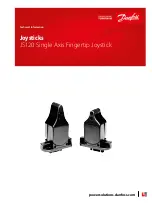
Fridgewatch 2100 Controller Mk4
Publication 3-58
Section 3
Page 88 of 152
Issue 1.1 : 01/08
NOTE: if two start value/set point/stop value sets are
required, changeover by internal time switch or digital
input (S20 = 1 or 2), these are set by adjusting S21 to
S26; refer to Fig 32.
Changes to the current start value/set point/stop value
set can be made by altering S1, S2 or S3 in which case
the corresponding value of settings S21 to S26 for the
current start value/set point/stop value set will change
automatically; refer to Fig 32.
S4
Lead compressor number (running order)
When Fridgewatch 2100 controls two or three compressors, S4
determines the running order priority. Possible sequences are illustrated
in Table 6.
N
UMBER OF
C
OMPRESSORS
C
OMPRESSOR
R
UNNING
O
RDER
P
RIORITY
S4
Compressor 1
→
Compressor 2
1
2
Compressor 2
→
Compressor 1
2
Compressor 1
→
Compressor 2
→
Compressor 3
1
Compressor 2
→
Compressor 3
→
Compressor 1
2
3
Compressor 3
→
Compressor 1
→
Compressor 2
3
Running order determined by Fridgewatch 2100 based on number of hours run
0
Table 6 Determining Compressor Running Order Priority
S5
Proportional band (units: pressure in bar or temperature in °C)
This is the deviation from the set point resulting in the maximum possible
capacity change to the compressor. Using too small a proportional band
setting will cause instability as small changes in the measured value give
rise to large changes in compressor capacity. On the other hand, making
the proportional band very large makes the control system very slow to
respond to changes in the demand for load.
The units for the proportional band may be pressure or temperature,
dependent on the chosen control parameter.
Before making alterations to S5 Proportional Band, S6 Integral Action
Time or S7 Derivative Action Time, it is essential to have read and
understood the notes under 5. Principles of Control.
S6
Integral action time (units: second)
This is the time, in seconds, required for the integral action to duplicate
the proportional action after a step change in capacity control has been
demanded. The integral term in the PID algorithm is used to remove the
steady state error which occurs with large and therefore stable
proportional bands, once compressor capacity is as close as possible to
that required.
A low value for the integral action time will produce a greater integral
effect and therefore quickly remove any steady state error, however, this
will lead to ‘hunting’ if the time period is too short. Conversely, a very
large value may produce long periods of running with an error, due to the
slow response of the integral action. Setting the integral action time to
zero has the effect of switching off the integral action.
















































